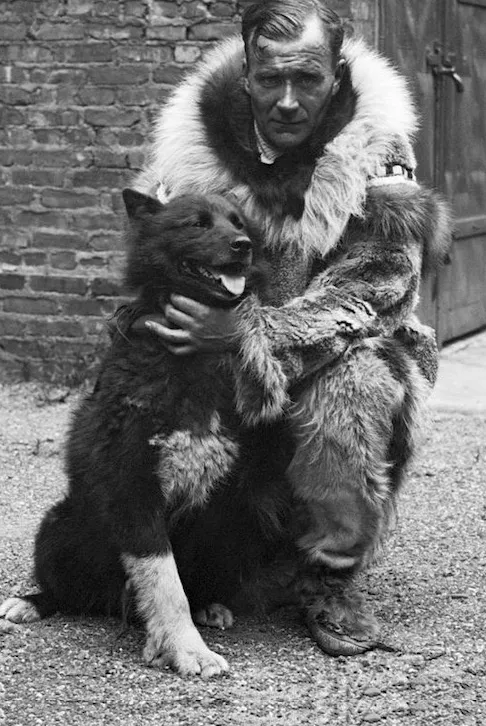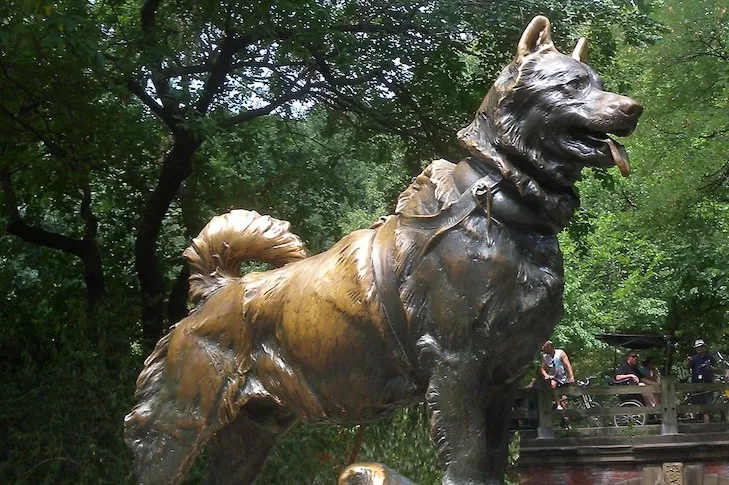The animated film “Balto,” released in 1995 by Amblin Entertainment, captured the hearts of audiences worldwide with its inspiring tale of a heroic sled dog. But the captivating story of Balto isn’t merely a work of fiction; it’s rooted in one of the most remarkable and harrowing real-life events in Alaskan history. Understanding the true story behind the Balto movie reveals a saga of courage, resilience, and the extraordinary bond between humans and their canine companions during a desperate crisis.
In January 1925, the remote town of Nome, Alaska, faced a silent but deadly threat. Doctors there began to identify symptoms of diphtheria, a highly contagious and often fatal bacterial infection, particularly dangerous for children. With the nearest supply of life-saving antitoxin serum located more than 500 miles away in Anchorage, panic began to spread. Alaska’s winters are legendary for their brutality, with temperatures plummeting to 50 degrees below zero Fahrenheit, and snow and ice piling up in yards. These extreme conditions rendered air travel impossible, and the usual sea routes were frozen solid. The only viable path through the vast, frozen wilderness was the 650-mile freight route known as the Iditarod Trail, connecting Nome to the railroad station in Nenana.
The Great Race of Mercy: A Desperate Relay
Transporting the serum by a single dog sled team would typically take about a month, far too slow to prevent a catastrophic epidemic that threatened the lives of thousands. The only hope lay in an audacious plan: a relay. Twenty brave mushers and their teams of sled dogs volunteered for what would become known as the “Great Race of Mercy,” or the 1925 Serum Run to Nome. This perilous journey would test the limits of endurance for both humans and animals.
Among the volunteer mushers was Leonhard Seppala, renowned for his exceptional team of Siberian Huskies, imported directly from Siberia. Seppala entrusted his most experienced and steadfast dog, 12-year-old Togo, to lead his team, tackling the longest and most dangerous leg of the journey, over 260 miles through treacherous terrain, including the perilous Norton Sound ice. Meanwhile, another musher, Gunnar Kaasen, placed his faith in a younger, less experienced three-year-old Siberian Husky named Balto to lead his team for the final stretch.
The precious serum arrived in Nenana on January 27 and was swiftly loaded onto the first sled. From there, it embarked on its epic journey, passed from one team to another, each musher and their dogs battling blizzards, blinding snow, and sub-zero temperatures across legs ranging from 24 to 52 miles. As the serum neared Nome, it reached the last team, led by Balto and Kaasen. Despite the heavy snowfall and whiteout conditions that made visibility almost impossible, Balto proved his mettle. His uncanny ability to stay on course, even when hurricane-force winds lifted the sled and dogs into the air, was instrumental in navigating the treacherous final miles.
 Balto, the famous sled dog, stands proudly with his musher Gunnar Kaasen.
Balto, the famous sled dog, stands proudly with his musher Gunnar Kaasen.
Balto and Kaasen charged into Nome just before dawn on February 2, completing the entire 650-mile journey in an unimaginably swift 127.5 hours—approximately five and a half days. This remarkable feat averted the diphtheria epidemic and etched their names into history. The bravery demonstrated during this event is often highlighted in accounts of the loyal dog story. The tale resonated deeply with the public, showcasing the extraordinary capabilities and unwavering loyalty of sled dogs.
The Legacy of Balto and Togo
While the animated “Balto” movie primarily focuses on its namesake, the real-life “Great Race of Mercy” was a collective triumph. Many hearts, hands, and paws contributed to this life-saving effort, and it’s widely acknowledged that Togo, led by Leonhard Seppala, covered the longest and most perilous section of the route, showcasing incredible endurance and navigation skills. However, Balto, who led the final sprint into Nome with the life-saving serum, quickly became the public symbol of the entire heroic endeavor. His story became synonymous with teamwork, unwavering courage, tenacity, and the power of hope in the face of seemingly insurmountable odds.
Balto died in 1933 at the age of 14, but his legacy lives on, far beyond the events of that fateful winter. The heroic dog the movie is it a true story question is often asked, and the answer is a resounding yes, though with some creative liberties taken for cinematic storytelling. Thousands of children and adults alike continue to visit his bronze statue in New York City’s Central Park, erected in his honor just months after the serum run. A special exhibit at the Cleveland Museum of Natural History also tells his remarkable story, where Balto’s preserved remains are displayed.
 The bronze statue of Balto, honoring his heroism, stands prominently in New York City’s Central Park.
The bronze statue of Balto, honoring his heroism, stands prominently in New York City’s Central Park.
Each March, sled-dog teams from across the globe gather to participate in the Iditarod Trail Sled Dog Race, an annual event that largely follows the historic serum-run route, commemorating the incredible feat. Beyond the statue and the museum, the spirit of Balto continues to inspire. The 1995 animated film introduced his story to a new generation, sparking renewed interest and admiration. Many people honor his memory by naming their beloved puppies Balto, keeping his name and his valiant journey alive. His tale is often mentioned alongside other famous canine stories, providing valuable insights for those interested in a dog’s purpose full book narratives or even japanese loyal dog movie themes.
Conclusion: A Timeless Tale of Heroism
The story of Balto, and the entire 1925 Serum Run, is a powerful reminder of the extraordinary lengths to which both humans and animals will go to save lives. The “Balto” movie brought this incredible true story to the big screen, sharing the legend of an inexperienced yet brave sled dog who rose to the challenge and became a symbol of hope. While the film may have romanticized certain aspects, the core truth of a community united against a deadly disease, relying on the strength and loyalty of their canine heroes, remains profoundly inspiring. For anyone interested in puppy tales books in order or epic animal adventures, Balto’s real-life saga offers a timeless narrative of courage and perseverance that continues to resonate today.
